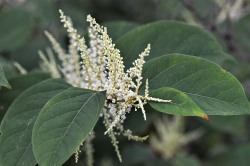 This month we are considering a case recently heard in the Court of Appeal involving the law of private nuisance. The case is significant because it is likely to affect how those working in conveyancing deal with some of the searches that are obtained when property is purchased.
This month we are considering a case recently heard in the Court of Appeal involving the law of private nuisance. The case is significant because it is likely to affect how those working in conveyancing deal with some of the searches that are obtained when property is purchased.
The key facts of the case were as follows:
• Mr Williams and Mr Waistell (“the Claimants”) were the owners of two adjoining semi-detached bungalows located in South Wales.
• Network Rail owned the land immediately behind the Claimants’ properties.
• On an embankment on Network Rail’s land was a large stand of Japanese knotweed.
• Claims were brought in private nuisance in 2015 on the basis that the Japanese knotweed had encroached on (invaded) the Claimants’ land and had caused damage to their properties.
For those readers who have completed their Diploma, you may have already recognised that based on these facts, the Claimants could have a successful claim in private nuisance.
At the heart of the law on private nuisance is the need to show that the defendant has caused unreasonable interference with someone else’s enjoyment of their land. So is Japanese knotweed a nuisance? To answer this question, it helps to understand just how much damage this plant can cause. Knotweed is notorious for its fast growth, through its underground roots or rhizomes. It can block drains, grow between slabs of concrete drives, disrupt brick paving, undermine garden walls, and overwhelm outbuildings and conservatories. It is also difficult (and expensive) to eradicate.
Based on this description Japanese knotweed can certainly be a nuisance. It might even be fair to describe it as a menace. By allowing a stand of it to grow too close to a neighbouring property, there is a very real risk that the plants will (unintentionally) interfere with a neighbour’s land. This in fact was the exact conclusion that the courts reached. It was further proven that Network Rail’s inaction had also caused both Claimants to suffer two significant types of losses:
a) A loss in the quiet enjoyment of their land. When lawyers talk about losses for things like enjoyment, the term they use to describe this is a “loss of amenity”; and
b) The Claimants’ ability to sell their properties for a proper market value.
One of the judges in the Court of Appeal case said of Network Rail that “They affect the owner’s ability fully to use and enjoy the land. They are a classic example of an interference with the amenity value of the land.”
Because of this decision, conveyancers will now need to pay even closer attention to the Japanese knotweed section on the Law Society’s TA6 property information form. This form is one that solicitors who adopt the Law Society’s Conveyancing Protocol use. The form has a specific enquiry relating to Japanese knotweed, Enquiry 7.8, which asks whether “the property is affected by Japanese knotweed”. If a property is affected then it goes on to ask if there is a Japanese knotweed management plan in place.
One firm of lawyers, JMP Solicitors, warned sellers that “If you answer untruthfully ‘no’ or ‘don’t know’, your buyer can come back to you and either rescind the contract or get damages from you as the property is now worth a lot less than they thought.”
Assuming a buyer’s solicitor is proceeding with care when helping with the property purchase, then the risk of a property being blighted by Japanese knotweed is low. Rather than a nasty surprise for a new owner, a properly managed conveyance will highlight an issue like this long before any contracts are signed.

